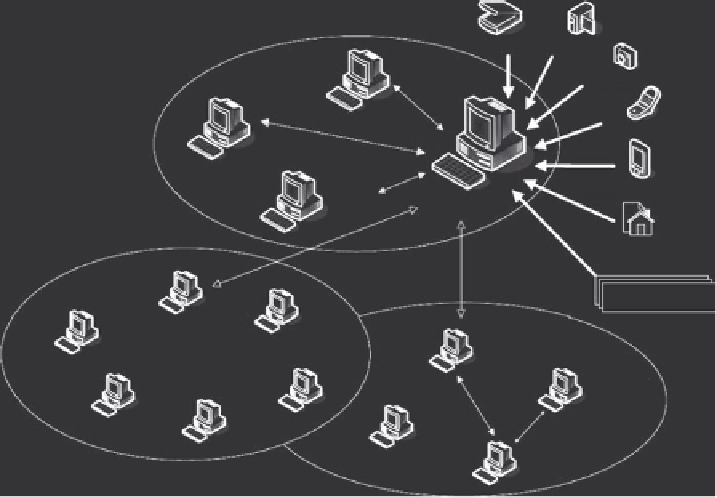Information Technology Reference
In-Depth Information
XML and JXTA technology is not dependent on any particular programming
language, networking platform, or system platform and can work with any
combination of these. Using peer groups, we can establish a set of peers with
naming within the group and mechanisms to create policies for creation and
deletion, membership, advertising, and discovery of other peer groups and
peer nodes, communication, security, and content sharing.
Returning again to our scenario, Ida is working on her personal com-
puter at home and has several peer members within her group using simi-
lar devices. By using JXTA peer-to-peer networking, she can also share her
serendipitous moment with other peer members who are using different
platforms or devices. For example, Ida can communicate with Azizan using
a different operating system and even with Ahmad using a mobile phone.
Figure 12.1 shows how Ida, Azizan, and Ahmad can share their serendipity
content through the use of a JXTA Virtual Network that can support multiple
peer group platforms.
12.3.5 JXTa Content Manager Service
The Content Manager Service (CMS) allows JXTA applications to share and
retrieve content within a peer group. Each item of shared content is repre-
sented by a unique content ID and a content advertisement that provides
meta-information about the content, such as its name, length, mime type,
Digital video
camera
Scanner
Peer
ID101
Web camera
Mobile phone
Capture
tools
Peer
group A
Peer
ID355
PDA
Ida windows
platform
Web
browser
Text, audio video
and images
JXTA virtual
network
Azizan
mac platform
Ahmad
linux platform
Peer
ID800
have world
cup videos
Peer
group B
Peer
ID7991
Peer
group C
Figure 12.1
The JXTA peer-to-peer platform for sharing serendipitous moments.





